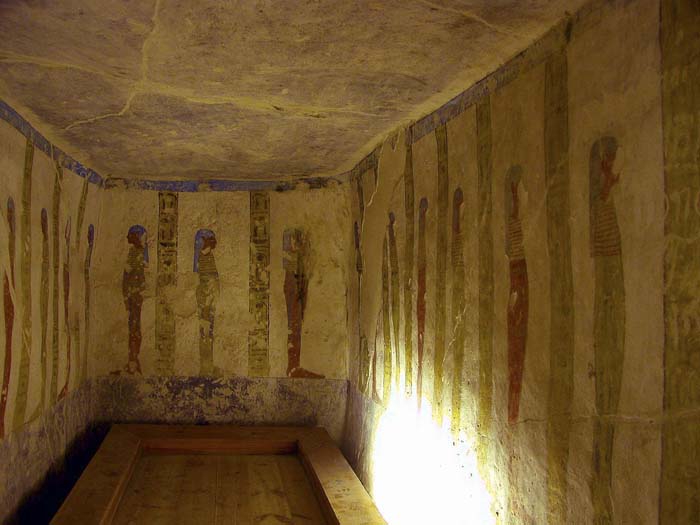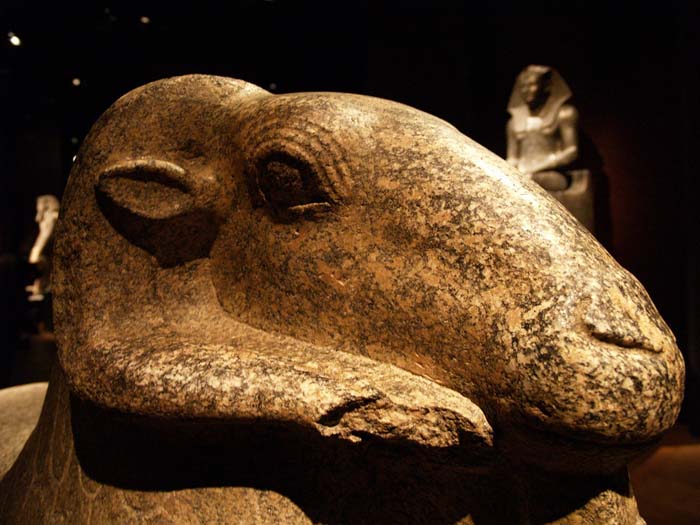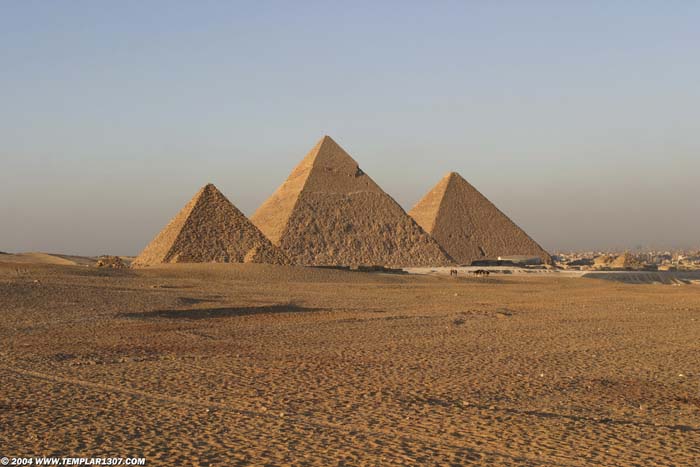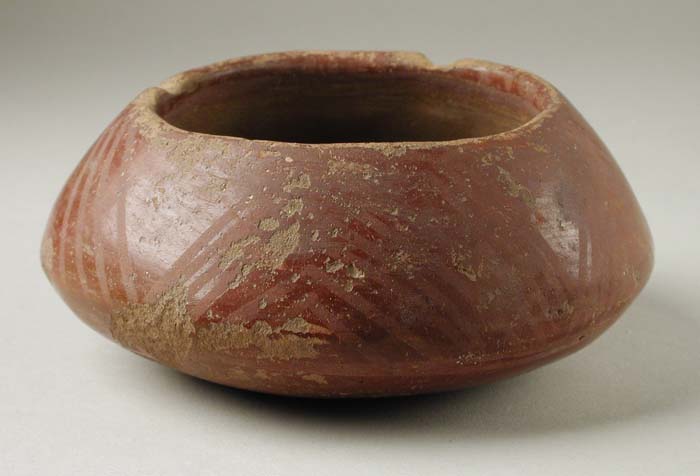The Art of Ancient Egypt
Much of what the modern world knows about Ancient Egypt can be attributed to Ancient Egyptian art. Everything from knowing what they looked like to what they did for a living, what they held dear and even the clothes they wore are things that have been made possible by viewing and examining the art that they left behind.
The art of ancient Egyptians remained much the same over the course of their 3,000 year rule. To them, it meant something different than what it means to us today. Art was their science, it represented what they believed to be divine truth.
Ancient Egyptian Art and Religion
Since the Ancient Egyptians were highly religious people, much of the art they created can be found on temple walls and in tombs in the form of sculptures and paintings. The paintings in tombs were meant to help guide the dead pharaoh into the afterlife. This is known as funerary art and is not only found on temple walls, but also inside tombs on scrolls of papyrus.

© Dennis Jarvis - Tomb wall drawings
Characteristics of Ancient Egyptian Art
Ancient Egyptian art had a number of distinctive characteristics that it followed throughout ancient Egyptian rule. For example in paintings we see:
- People depicted in paintings are usually facing the viewer with their heads turned so the viewer only sees their profile.
- When a pharaoh is depicted in a painting, he is always larger than the other human figures in it.
- Social status determined how large the individual was represented in a painting.
- Pharaohs are always depicted as being tense and formal, whereas ordinary people are depicted in a more relaxed manner (more realistic).
- Pictures in ancient Egyptian art are usually never drawn with any depth perception which makes them two-dimensional.

© Elena Pleskevich - Wall painting
And in sculptures we see:
- Realistic human faces
- Images are always upright, whether they are sitting or standing and are always formal.
- Figures always face forward.
- Males are depicted as darker in color than females.
- Seated subjects always had their hands on their knees.

© Peter Miller - Ancient Egyptian Sculpture
The ancient Egyptians loved depicting the world around them in their art. But as fond as they were of details, they aimed more for idyllic representations instead of exact copies. They used simple, well defined shapes against areas of smooth color. The six colors they used in their paintings were green, yellow, black, white, blue and red. Each had a different meaning.
Ancient Egyptian Art and Symbols
Symbolism played an important role in ancient Egyptian art. Today, when a painter paints the sun, it is just a sun, but in ancient Egypt, it might mean creation, illumination or spiritual sight. The ancient Egyptians used symbols like we would use code today.
Animals and other living organisms were often used as symbols to depict their gods and goddesses. They didn’t believe that, for example, Horus had the head of a falcon, they used it as a symbol to represent that they believed he was full of wisdom.

© Maurizio Zanetti - Animal Sculpture
- One of the most well-known ancient Egyptian symbols was the hieroglyph. It is a language based on pictures instead of an alphabet.
- Colors were used as symbols. Green represented new life; Red represented life, victory, fire and rage; White represented purity and authority; Black represented death as well as resurrection, and at times it also symbolized life and fertility; Yellow represented eternity (as the Sun was yellow); and Blue represented the sun and sky, re-birth and life.
- The vulture often represented motherhood, as seen in the headdresses of goddesses including Nekhbet, Satet and Mut. Vultures were known to be very protective of their young.
- The beetle represented transformation or evolution. This is because the scarab beetle, or dung beetle, would lay its eggs in dung and its young ate and dug their way out of it. Many amulets bore the scarab beetle symbol to help the deceased during their final judgment.
- The Ankh was used as a symbol of eternal life. It’s found in hieroglyphs, in paintings, on papyrus and was often shaped out of metal to make decorative mirror cases.

© NeferTiyi - Hieroglyphs
Ancient Egyptian Art and Architecture
The ancient Egyptians were best known for their pyramids. These impressive and stately works of architecture are not only grand displays of art themselves, they also represent incredible mathematical and technological knowledge. Over 80 pyramids still stand today that are over 3,000 years old.
The Great Pyramid stood as the world’s tallest structure for 4,000 years until the 20th century, and is classified as one of the seven wonders of the ancient world. It was built using two million limestone blocks and was covered with smooth slabs of limestone, an amazing architectural accomplishment.
Click here to read more about The Ancient Egyptian Pyramids

© Benjamin - Giza Pyramids
Temples are also impressive displays of architecture. Some temples took years to build and were added on to with each successive pharaoh.
- Karnak is the largest and oldest religious site in the entire world. It took generations to build and due to its Hypostyle Hall and smaller temples, it is a great representation of Egyptian architecture.
- Abu Simbel is a complex originally carved out of a mountainside. It is well-known for the four seated statues at the entrance.
- The Temple of Kom Ombo is an example of unusual temple architecture. It was built as mirrored temples with two entrances, two sanctuaries, etc.
Click here to read more about the Temples of Ancient Egypt...

© Héctor de Pereda - The two temples at Abu Simbel
Ancient Egyptian Art and Crafts
Examples of ancient Egyptian art and crafts still exist today. They have survived the ravages of thousands of years and are prime examples of the dedication craftsmen felt for their art. Unfortunately, items crafted from leather, wood and other perishables have been destroyed. However, some of their jewelry, pottery, carpentry and even glass pieces exist today and remind us of their tremendous skill.
- Jewelry has been found that is made of amethyst, cornelian, lapis lazuli and other semi-precious stones.
- They often used nature symbols in their jewelry such as garlands of flowers and fruits.
- The ancient technique of Cloisonné was used in jewelry decoration.
- They were proficient in glass and glazing, for example, the creation of faience tiles.
- Chairs and other furniture were created using ornamental panels of ivory, ebony, redwood and even gold.
- Fragments of ornate tapestries have been found in tombs, proving the ancient Egyptians were also adept at weaving, spinning and embroidery.
- Potters used steatite (soapstone) to carve statues, vases and amulets.

© Ashley van Haeften - Decorated Pot
Animals in Ancient Egyptian Art
The ancient Egyptians revered animals. They often represented certain godly attributes. The animals in ancient Egypt were used both for food and as pets; some were even mummified and given decorated funerals.
- The jackal was used mainly to represent the god of the afterlife, Anubis, the jackal is a common animal seen in ancient Egyptian art.
- Cats are often seen in paintings. The ancient Egyptians adored cats because cats protected their stores of food from rats, snakes and mice. They were often kept as pets and mummified.
- Crocodiles were both revered and feared. They were given divine status and were popularly used in statues and temple drawings.
- Tombs were covered with images of cattle being inspected and even milked. Cattle were a prized possession as the ancient Egyptians used every part of the animal, even their dung, for fuel.
- The cobra held ancient Egyptians transfixed and fearful. The snake became the protector of the king and is often used to represent the king, known as a uraeus. The cobra is pervasive in tomb art, and the image of a cobra head was also used in amulets.
- Statues have been found of hippopotami, made from blue Egyptian faience. No longer a threat to modern Egypt, hippopotami often killed those working along the Nile River in ancient times.

© Connie Ma - Egyptian Cat Sculptures
Facts about Art in Ancient Egypt
- The earliest work of art dates back 5,000 years ago to the Palette of Narmer. The first king of the first dynasty, the palette is carved in relief and displays Narmer’s victories.
- Ancient Egyptians started sculpting during the 3rd Dynasty. Unlike paintings, sculptures of people always faced forward.
- King Tutankhamen’s sarcophagus was decorated by master craftsman and was made from solid gold.
- Tombs from the 4th Dynasty onwards have vivid wall paintings of everyday life including the plants, birds and animals around them.
- Most ancient Egyptian art is two dimensional, meaning there is no perspective (line of reference).
- The colors used for paintings and tapestries were taken from plants and minerals.
- Scenes were displayed in horizontal rows called registers.
- The ancient Egyptians didn’t attempt to include shadows or the play of light in their artwork.
- The Armana Period represented the only time in Egypt’s history when art turned toward a more naturalistic style.
- Figures in ancient Egyptian art were emotionless because the ancient Egyptians believed that emotions were fleeting.
